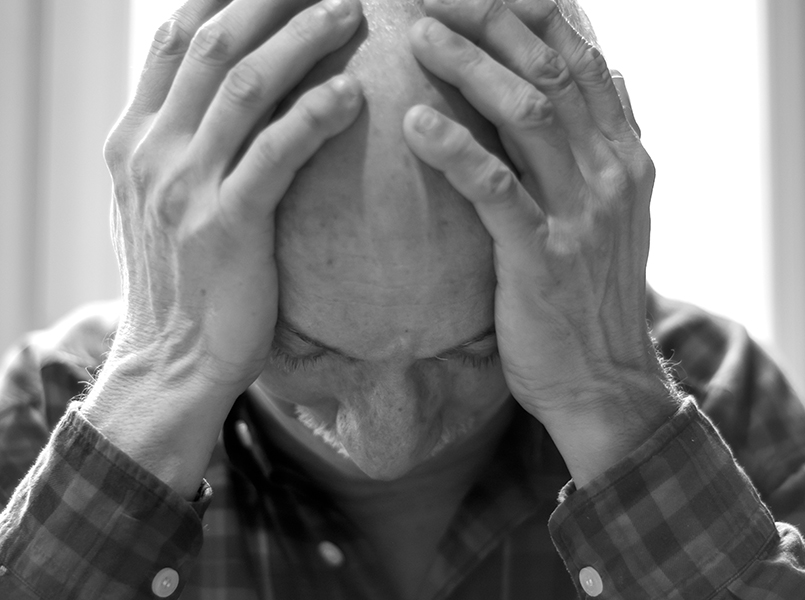How To Control Pain in a Hair Transplant Procedure
Like any surgical procedure, pain can be part of your experience. The goal of this article is to describe ways to manage or minimize this part of a hair-transplant procedure. We will divide this article into how to manage discomfort during a procedure and then how to do so after one as well.
What I have found to have the single greatest impact on discomfort is the initial injection of the ring block to numb the head. Most clinics rely on an oral pain medication and Valium to do the job. I have found that this combination is insufficient for my patients to have the comfort level that I would like for them to have. I prefer Level 2 conscious sedation in which an intravenous mixture of Versed and Fentanyl are given so that the initial part of the procedure is virtually painless. The one caveat with the administration of these medications is that it must be performed in a fully accredited surgical facility and not in an office. That is unfortunately why the majority of clinics simply rely on oral medications, which I believe is inadequate to make the experience as pleasant as possible.
 Taking a step back the question must be posed then why is patient comfort so important if the discomfort would only last between 30 to 60 minutes? Shouldn’t someone just grin and bear it? As they say, no pain no gain, right? However, I liken a painful experience to post-traumatic stress disorder (PTSD) in which that pain experience is relived over and over again. This is especially true when you consider that hair transplantation is a lifelong endeavor and that you may need 2 to 3 more transplants during a lifetime to cover additional, progressive hair loss. Making the experience pleasant is a cornerstone to any procedure in my opinion. PTSD is not an option.
Taking a step back the question must be posed then why is patient comfort so important if the discomfort would only last between 30 to 60 minutes? Shouldn’t someone just grin and bear it? As they say, no pain no gain, right? However, I liken a painful experience to post-traumatic stress disorder (PTSD) in which that pain experience is relived over and over again. This is especially true when you consider that hair transplantation is a lifelong endeavor and that you may need 2 to 3 more transplants during a lifetime to cover additional, progressive hair loss. Making the experience pleasant is a cornerstone to any procedure in my opinion. PTSD is not an option.
Discomfort following a procedure cannot be entirely eliminated unlike during the procedure but it can be greatly minimized with the right surgical technique and the appropriate postoperative care instructions. We will review these two elements herein. Discomfort after a procedure truly relates to the area in the back of the head where the grafts have been taken. It is the surgeon’s effort that should be made to ensure that the grafts are taken in such a way to minimize discomfort. Here are some tricks that are very important during harvesting to lessen postoperative discomfort.
First, it is vital that adequate tumescent fluid be used during harvesting. By applying a great degree of fluid under the skin, the surgeon lifts the hair follicles a tremendous distance away from the underlying nerve and blood supply so that the wound heals well, the hairs are harvested cleanly, and no injury is made to the structures below. This one fact alone can be the deciding factor between an uncomfortable and a relatively comfortable postoperative experience. During the harvesting, the surgeon should be fully cognizant that all nerve and blood supply is preserved and that injury does not occur. Secondly, the width of the incision can be important too. I try to keep my incision widths under 1 centimeter so that there is minimal tension on the wound. This not only helps with better healing but also makes the back area feel less tight after the procedure. Thirdly, the closure is critical. Staple closures are by definition much more uncomfortable for patients. Despite a rapid closing time that benefits the surgeon, staple closures lead to an achiness that is not as present with a suture closure. Further, sutures should only pass through the mid-follicle depth so that they do not ensnare or trap nerves. By doing so the experience after the procedure should be much better. Using a dilute steroid injection will also minimize discomfort and that combined with a long-lasting anesthetic can truly help toward the end of the procedure.
In the postoperative setting, we have found that taking a prescribed narcotic the first night of the procedure can truly limit the level of discomfort. Sleeping with one’s head inclined can minimize the pressure sensation and also help with any discomfort that may arise from pressure from lying flat on one’s back. Using ice packs on and off for the first 1 to 3 days can also be of significant benefit.
For those patients who have come to me from other clinics that are potentially less careful with their harvesting techniques and that have created chronic pain issues in their patients, I have used botulinum toxin (Botox ®) to manage this condition and have found that after 2 to 3 sessions that the pain is completely eliminated. Fortunately, I have not had chronic pain issues in my patients before but have managed this condition from patients coming from elsewhere. Hopefully these tricks and tips can help you understand how to avoid and/or minimize discomfort related to a hair transplant procedure.
Samuel M. Lam, MD, FACS is a board certified, hair restoration surgeon specializing in hair transplant procedures for men and women. To learn more about Dr Lam’s hair restoration procedures please visit our website hairtx.com or call 972-312-8105 to schedule a consultation.




